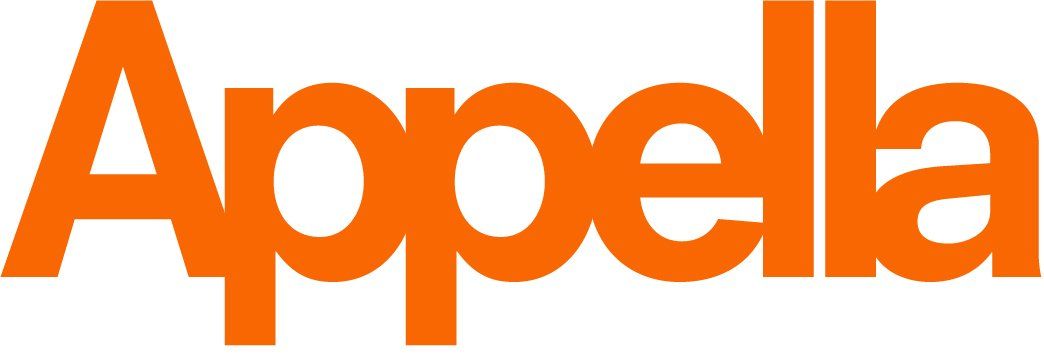How Brand Names Work
Famous Brand Names Explained
Read below to find out more about the names behind these iconic brands:

ActionAid
[the descriptive name]
ActionAid was founded in 1972 as a child sponsorship charity when 88 UK supporters sponsored 88 children in India and Kenya with the focus primarily being to provide children with an education.
This is a modernist version of the standard descriptor name in which a neat graphical enhancement of the qualifier word 'action' + descriptor theme 'aid' cleverly inverts the 'i' into an exclamation mark. This transforms the relatively bland charity name into a call to arms.
Modern descriptor brand naming can be broken down into two types: whole words with standard syntax (e.g. THE BRITISH MUSEUM) or compounded names like MOTHER + CARE (MOTHERCARE) and ACTION + AID (ACTIONAID) in which the qualifier element can heighten the effect of a tried and trustworthy formula.
The former is the traditionalist brand name type; the latter, snappy and immediate, is more dramatic and brandable.
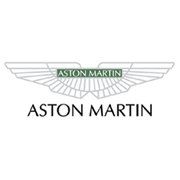
Aston Martin
[the toponym]
The story behind the Aston Martin brand name and British automobile manufacturer is one of the more romantic in the brand naming pantheon.
It derives from the motorsport days of one of the company’s two founders, Lionel Martin, who won a number of races on the famous Aston Clinton 3/4 mile hill climb near Aylesbury. His first race was in 1914 and there is a plaque at the top of the hill to this day to commemorate his achievements, so famous did the combination of drive, car and hill become.
These toponyms, and also eponyms, tend to escape typical name evaluation and qualitative research techniques. They reach outside the average Joe’s experience into a folklore and intimate acquaintance with a particular sphere of activity, here motorsport. The brand story that emerges is one that: a) gives depth, mystique and credence to a brand and b) a strong suit in brand name presentations. Needless to say, few and far between are the occasions on which one can use, or is encouraged to use, this brand naming method so counter-intuitive and anachronistic can these names seem.
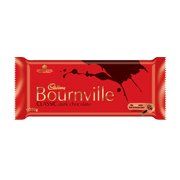
Bournville
[the toponym]
Bournville, steeped in the history of not only Birmingham but also the philanthropic Cadbury family, is one of the most famous chocolate brand names in the UK.
Its name derives from the model town built in 1893 by George and Richard Cadbury for the employees of their new chocolate factory and business headquarters, built fifteen years earlier in what was then a greenfield site south of Birmingham. The rural location was chosen for its easy access to a proposed development of the Birmingham West Suburban Railway and the Worcester and Birmingham Canal.
The name comes from the Bourn brook that ran through the site and French ville ‘village’. This seems to have been because French chocolate was so highly regarded. As with Cinzano, the exoticism of the provenance, this time French, was considered central to the desired brand identity, here of a superior, dark chocolate.
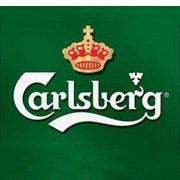
Carlsberg
[the coded name]
Carlsberg is the paterfamilias of lager brands and cavalier king of the ads. A leviathan of brewing spanning 160 years, Carlsberg was established in 1847 on a hill outside Copenhagen by J.C. Jacobsen.
The name of the company, and beer in the UK, derives from that of Jacobsen’s newly born son, Carl, compounded with the location of the brewery, berg beinɡ ‘hill’ in Danish. This kind of coded brand name which has great value for the originator is important for the employees and ethos of the company, but less strategic in its link with the product.
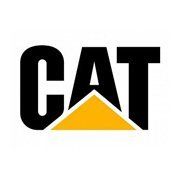
Caterpillar
[the figurative name]
Caterpillar was registered as a trademark and brand name in 1910 by Benjamin Holt of Stockton, California for his ‘crawler tractor’ designed to work in the soft, alluvial farmland of the San Joaquin Valley Delta. The steam powered tractors used hitherto had been too heavy and ineffective.
The similarities of this machine with the animal from which its name derives were seemingly more restricted than those of the metaphor-rich Jaguar car (see other Figurative name study). However, when you consider the picture of heavy 1000lb steam tractors sinking into the rich alluvial soil and contrast this with the sight of a vehicle able to ride atop the soil, the image becomes a fuller one. The caterpillar-like multi-tread appearance (caterpillars have 5+ pairs of legs on segmented bodies) can then be matched by the ‘crawler tractor’s’ apparent lightness of weight that belies its true mass.
The abbreviation of the brand name to CAT and its apparent, current interchangeability with Caterpillar is interesting. It implies a conceptual exclusivity from the source animal meanings that has arisen from pure brand meaning and brand use amongst the market. That no one has considered the mixed signals sent out by association with these two highly different types of animal is unlikely. More likely is it that a decision has been made on the basis that: a) either the brand meaning, as a contextual meaning, is so far removed from the context of animal environments as to be irrelevant or, b) more probable, that the adroitness of movement of the cat is similar enough to the caterpillar’s characteristic of lightness to make the other main difference, multi-tread facility, less significant in its turn. This reducing of the leg power from between ten and twenty to the cat’s four also bears a very neat comparison with the shortening, or reducing, of the name from twelve letters to three.
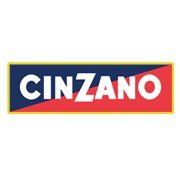
Cinzano
[the eponym]
Brothers Carlos and Giovanni Cinzano, who had started their family business as distillers in the town of Pecetto near Turin in 1757, created the new ‘vermouth rosso’ in 1761. A few years later, the Cinzano Bianco was also created.
This name is quintessentially Italian, with its C sound like the ch– in ch-eers and the variably pronounced and enigmatically enlarged middle Z. The energetic final ‘o’ vowel, the consonantal N rhyme and the three syllable spread suffuse this name with Italianate articulatory joy.
The exotic provenance matches its stylish name and also the wealth of thirty five aromatic and herbal ingredients in the original recipe.

Gillette
[the eponym]
King Camp Gillette gave his name to one of the most famous names in branding history, that of the high end safety razor with revolutionary detachable blades which also dulled less quickly than its competitors. Yes, the forenames are real and the surname derives from the Gillet family of Somerset, a branch of which came to settle in Massachusetts in 1630. That’s some American pedigree for a very French-sounding name.
Gillette (1855 – 1932) professed to Utopian Socialism, an American-style forerunner of Marxism, and held the interesting viewpoint that a business tycoon was the natural leader of social reform. He wrote The Human Drift in 1896, a book apparently outlining plans for systematized social and technological reform. The plans centre on a vast three level metropolis at Niagara Falls using the plunging river Niagara for electric power.
Where, when and in what circumstances the Gillet family changed their name to that of one of the most famous of brand names in history is not so widely known. But it was a signal decision that made two fundamental branding statements: they tried to secure one single pronunciation and ensured the provenance was firmly rooted in French soil. Not to say that Gillet is not a conspicuously French word, just that Gillette is even more so.
The pronunciation of Gillet would be open to interpretation to a French-style soft G and a vowel final ending, as in French words Giles and est, or alternatively an English-style hard G and hard final T. Gillette ensures that everyone uses a hard final T, but does still leaves the initial G open to debate and there is no way around that that one. The single pronunciation is something of a brand manager’s desideratum, a desired but quite often unachievable goal, and often is only fixed after the brand has been in circulation for some time.
The Gallicization that the Gillets opted for does a number of things: for good or ill, it suggests femininity, small size and, because it’s French, stylishness. On balance, that is a net semantic gain and benefits the brand identity, given that these are small and stylish products.
Gillette was launched by King Camp Gillette in 1903 when he sold 51 razors and 168 blades and the company was sold to Proctor & Gamble in 2005 for $57 bn.
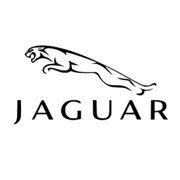
Jaguar
[the figurative name]
‘One of the most prestigious brand names in motoring, Jaguar, first appeared on a car in September 1935. This was three years before events that signalled the start of World War II. The unfortunately named SS Jaguar was created by motorcycle enthusiast William Lyons who founded the Swallow Sidecar Company in 1922 in Coventry, the home of British automobile manufacturing from the 1920s to the 1960s. The SS, referring to these initial letters of Swallow Sidecar, was dropped after the war. Lyons apparently had a list of 500 fast moving animals ready to use for his new brands.
The association of the jaguar with the car is not only one of speed but also of extended shape, sleekness, style, power and eminent status. This linking of characteristics between the target brand and the animal source provides an intriguing wealth of branding potential allowing for a range of design and strategic interpretations. Any of the qualities of the source figure can be enlarged upon for strategic branding purposes and, in Jaguar’s case, that of its muscular sleekness, burst speed, shape when sprinting and status as king predator are all conspicuously used. It’s a massive branding royal flush.

Mothercare
[the descriptive name]
There are a number of reasons why a descriptive brand name might be appropriate. Maximizing consumer appeal is not usually one of them. However, when safety & security are of premium concern, then a modified descriptive name can work. For MOTHERCARE the paramount consideration is the ‘care by, of and for a mother.’ Job done.
These descriptive name types predate the 1980s brand name revolution era, a time when some of the more arcane and adventurous brand names started to emerge. MOTHERCARE was founded by Selim Zikha in 1961 as a re-branding of an eponymous brand W.J Harris, a nursery furniture chain.
The CARE qualifier adds a succinct and simple variation on the descriptive theme of baby care and motherhood etc. Another adjective such as love (too cosy), sure (too bland) or good (too unusual) might have worked but would have lacked the simple elegance of care.
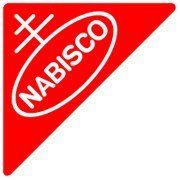
Nabisco
[the acronym]
One of the most traditional of brand name types, this is actually a near acronym coming from two and four letter abbreviations of the National Biscuit Company (of America). There is also a felicitous blending -c- that links the biscuit with company. Subtleties like this can make a simple acronymic acquire a richer meaning that can have wider recognition, and hence appeal, beyond that of just the willing and knowledgeable stakeholder.
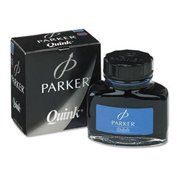
Quink
[the blend]
QUINK is a blend of quick and ink, short for quick drying ink, and was created by Parker Pens in 1931. Its invention eliminated the need for blotting paper and led to the development of the most widely used model of fountain pen in history (over $400 million worth of sales in its 30 year history) the Parker 51.
The QUINK blend has the additional benefit of blending at the syllable focus, the i vowel, and retaining much of each of the blended words in the final name: the whole of the second word ink is visible and the final letter (and phoneme) k of the first word quick are also visible. This made it: a) relatively short and b) aesthetically attractive. This is coupled with its being a very English word type, qu pronounced as KW and the final -ink which is a very English word ending. Consequently, this appears as a typical English word that has accidentally become branded whereas the opposite is true.
This allows the brand to become lexicalised and more easily enter the mainstream vocabulary. It also makes a typically modern word type look more established and traditional in keeping with the gravitas of the leading brand of writing implements: really quite subtle product naming if not creating the most pronounceable name overseas.
